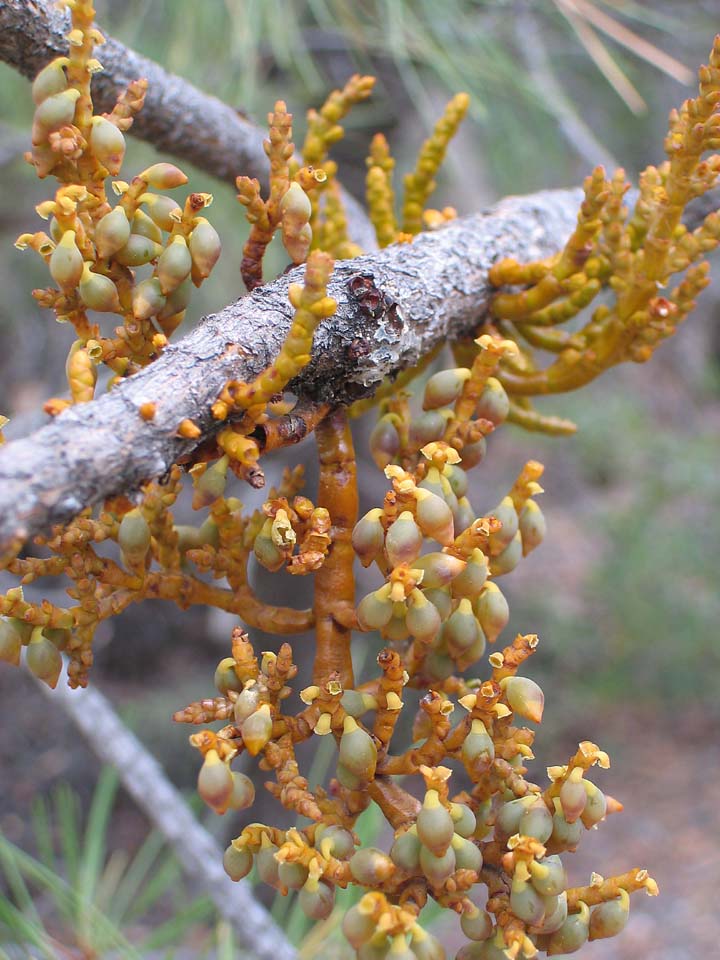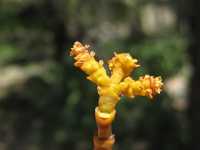|
Arceuthobium vaginatum var. cryptopodum
 No occurrences found (redirected from: Arceuthobium vaginatum subsp. cryptopodum (Engelm.) Hawksw. & Wiens) |
|
|
Family: Santalaceae
pineland dwarf mistletoe
[Arceuthobium cryptopodum (Engelm.) A. Gray, more] |
|




